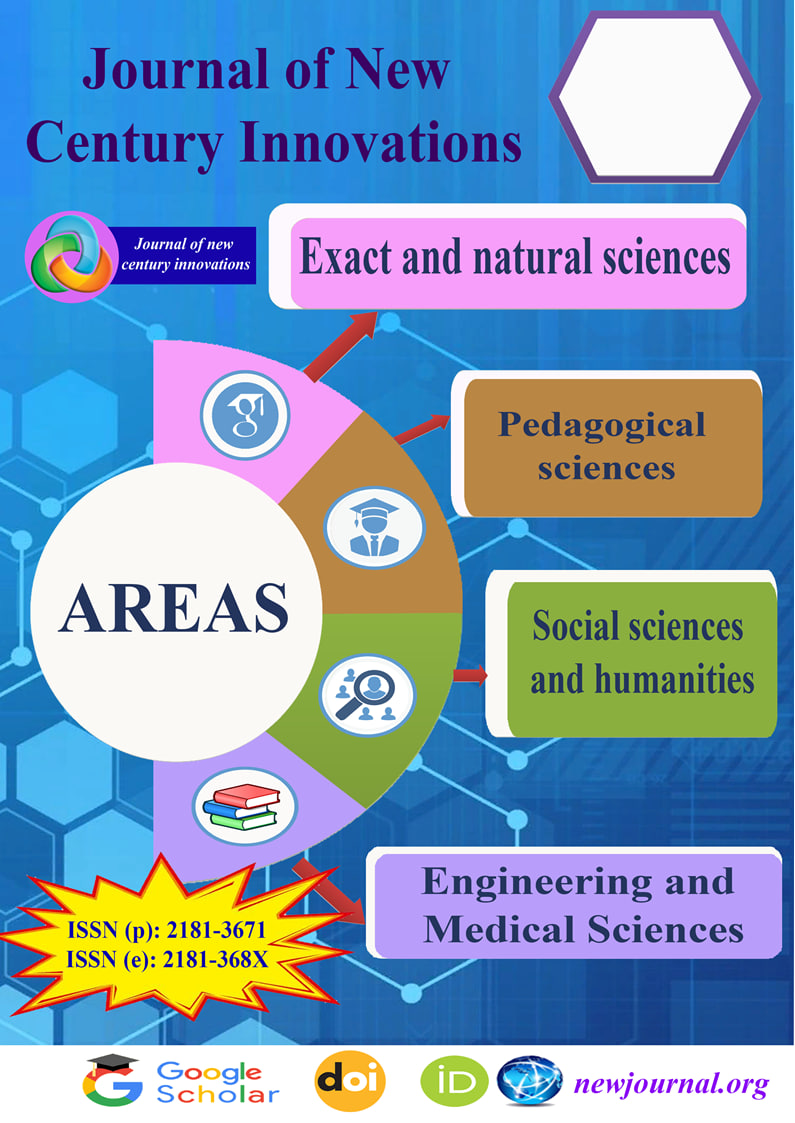МОДЕЛИРОВАНИЕ ОБТЕКАНИЯ АЭРОДИНАМИЧЕСКОГО ПРОФИЛЯ BELL 540 В ТУРБУЛЕНТНОМ ПОТОКЕ
Keywords:
Ключевые слова: уравнения Навье–Стокса; отрывное течение; модель ; Comsol Multiphysics; NACA.Abstract
Аннотация. В данной статье представлено численное исследование турбулентного обтекания аэродинамического профиля BELL 540 дозвуковым потоком при углах атаки от 0° до 12°. Для численной реализации уравнений турбулентности использовался метод конечных элементов, реализованный в программном комплексе COMSOL Multiphysics. Полученные результаты сравнивались с данными экспериментальных измерений и показали хорошее согласование, что подтверждает адекватность выбранной модели турбулентности и корректность проведённого численного моделирования. В статье подробно рассматриваются основные аспекты методики исследования, включая постановку задачи, параметры моделирования и анализ распределения аэродинамических характеристик. Проведённое исследование способствует углублённому пониманию особенностей турбулентного обтекания аэродинамических профилей и может быть полезным при разработке более точных инженерных моделей и аэродинамических расчётов вертолётных лопастей.
References
[1] Orozco Murillo W., Palacio-Fernande J. A., Patiño Arcila I. D., Zapata Monsalve J. S. & Hincapié Isaza J.A. Analysis of a Jet Pump Performance under Different Primary Nozzle Positions and Inlet Pressures using two Approaches: One Dimensional Analytical Model and Three Dimensional CFD Simulations // Journal of Applied and Computational Mechanics. 2020, No.6 (Special Issue), рр.1228-1244.
[2] Hadad K., Eidi H. R. & Mokhtari J. VOC level control by ventilation improvement of Flexography printing room using CFD modeling // Journal of Applied and Computational Mechanics. 2017, No.3(3), рр.171-177.
[3] Tsega E.G., Katiyar V.K. A Numerical Simulation of Inspiratory Airflow in Human Airways during Exercise at Sea Level and at High Altitude // Journal of Applied and Computational Mechanics. 2019, No.5(1), рр.70-76.
[4] Sentyabov A.V, Gavrilov A.A, Dekterev A.A. Investigation of turbulence models for computation of swirling flows // Thermophysics and aeromechanics. 2011, No.18:1, рр.73-85.
[5] Menter F.R. Zonal two-equation k- ω turbulence models for aerodynamic flows. AIAAPaper 1993-2906.
[6] Menter F.R., Kuntz M., Langtry R. TenYears of Industrial Experience with the SST Turbulence Model. Turbulence, Heat and [7] Mass Transfer 4, ed: K. Hanjalic, Y. Nagano, and M. Tummers, Begell House, Inc., 2003, pp. 625-632.
[8] Pasha A.A. Study of parameters affecting separation bubble size in high speed flows using k-ω turbulence model // Journal of Applied and Computational Mechanics 2018, No. 4(2), рр.95-104.
[9] Malikov Z.M., Madaliev M.E. Numerical study of a swirling turbulent flow through a channel with an abrubt expansion // Vestnik Tomskogo Gosudarstvennogo Universiteta. Matematika i Mekhanika. 2021, No. 72, рр.93-101.
[10] Malikov Z.M., Madaliev M.E. Mathematical modeling of a turbulent flow in a centrifugal separator // Vestnik Tomskogo Gosudarstvennogo Universiteta. Matematika i Mekhanika. 2021, No. 71, рр.121-138.
[11] Madaliev М.Е. Numerical Calculation of an Air Centrifugal Separator Based on the SARC Turbulence Model // J. Appl. Comput. Mech. 2021, No. 7(2), рр.1133-1140 URL:https://doi.org/10.22055/JACM.2020.31423.1871
[12] Spalart P.R., Jou W.H., Strelets M., Allmaras S.R. Comments on the Feasibility of LES for Wings and on a Hybrid, RANS/LES Approach / Advances in DNS/LES, Proceedings of 1st AFOSR International Conference on DNS/LES, Vol. 1, Greyden Press, Columbus, 1997. P. 137-147
[13] Turbulence modeling Resource. NASA Langley Research Center. URL: http://turbmodels.larc.nasa.gov .
[14] Ladson C.L. Effects of Independent Variation of Mach and Reynolds Numbers on the Low-Speed Aerodynamic Characteristics of the NACA 0012 Airfoil Section / NASA TM 4074, October 1988.
[15] Khujaev I., Jumayev J., Hamdamov M. Modeling of Combustion Processes in Cylindrical Chambers Using Modern Package Programs / AIP Conference Proceedings, 2024, 3004(1), 060015
[16] Khujaev I., Toirov O., Jumayev J., Hamdamov M. Modeling of vertical axis wind turbine using Ansys Fluent package program / E3S Web of Conferences, 2023, 401, 04040
[17] Hamdamov M., Bozorov B., Mamataliyeva H. Ergashov D. Numerical modeling of wind turbine with vertical axis using turbulence model k - ω in ANSYS FLUENT / E3S Web of Conferences, 2023, 401, 02024
[18] Hamdamov M.M., Ishnazarov A.I., Mamadaliev K.A. Numerical Modeling of Vertical Axis Wind Turbines Using ANSYS Fluent Software // Lecture Notes in Computer Science (including subseries Lecture Notes in Artificial Intelligence and Lecture Notes in Bioinformatics). 2023, 13772 LNCS. P.156-170
[19] Hamdamov M., Bozorov B., Mamataliyeva H. , Ergashov D. Numerical modeling of wind turbine with vertical axis using turbulence model k - ω in ANSYS FLUENT / E3S Web of Conferences, 2023, 401, 02024
[20] Mathew S. Wind energy: fundamentals, resource analysis and economics. New York, Springer-Verlag Berlin Heidelberg, 2006.
[21] Goudarzi A., Ahmadi A. Intelligent Analysis of Wind Turbine Power Curve Models. In Computational Intelligence Applications in Smart Grid (CIASG), IEEE, 2014, P. 1-7,
[22] Carrillo C., Montan A., Cidras J., Dıaz-Dorado E. Review of powercurve modeling for wind turbines // Renewable and Sustainable Energy Reviews. 2013, Vol. 21, pp. 572-581.
[23] Sohoni V., Gupta S., Nema R. A Critical Review on WindTurbine Power Curve Modeling Techniques and Their Applications in Wind Based Energy Systems // Journal of energy. 2016, pp.1-18.
[24] Alhassan A. Teyabeen. Statistical Analysis of Wind Speed Data / 6th International Renewable Energy Congress (IREC), 2015, IEEE. P.1-6.
[25] Alhassan A. Teyabeen. Selection of appropriate statistical model for wind speed data, and selecting suitable turbine generator at four locations in Libya. [Master's thesis]; Dept. of EE; University of Tripoli, Libya, 2017.

